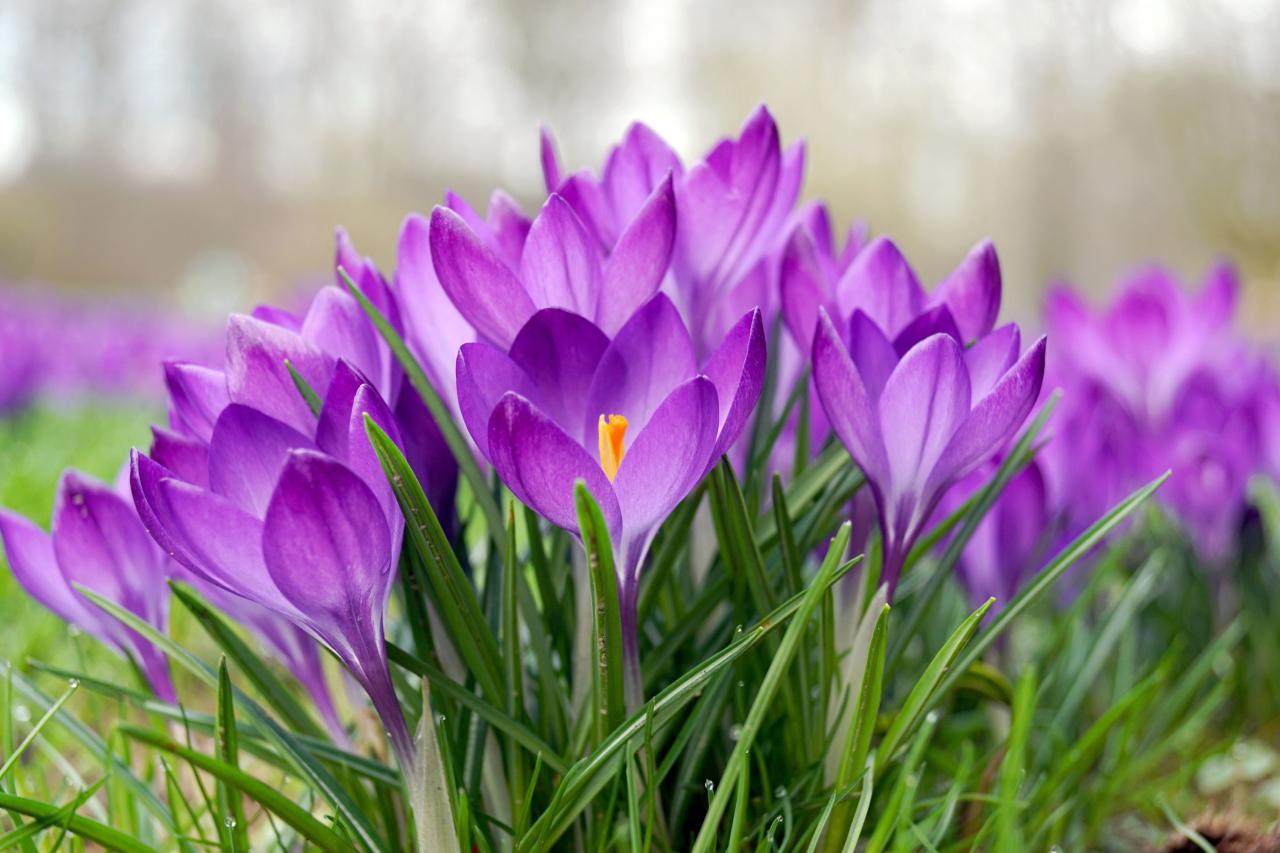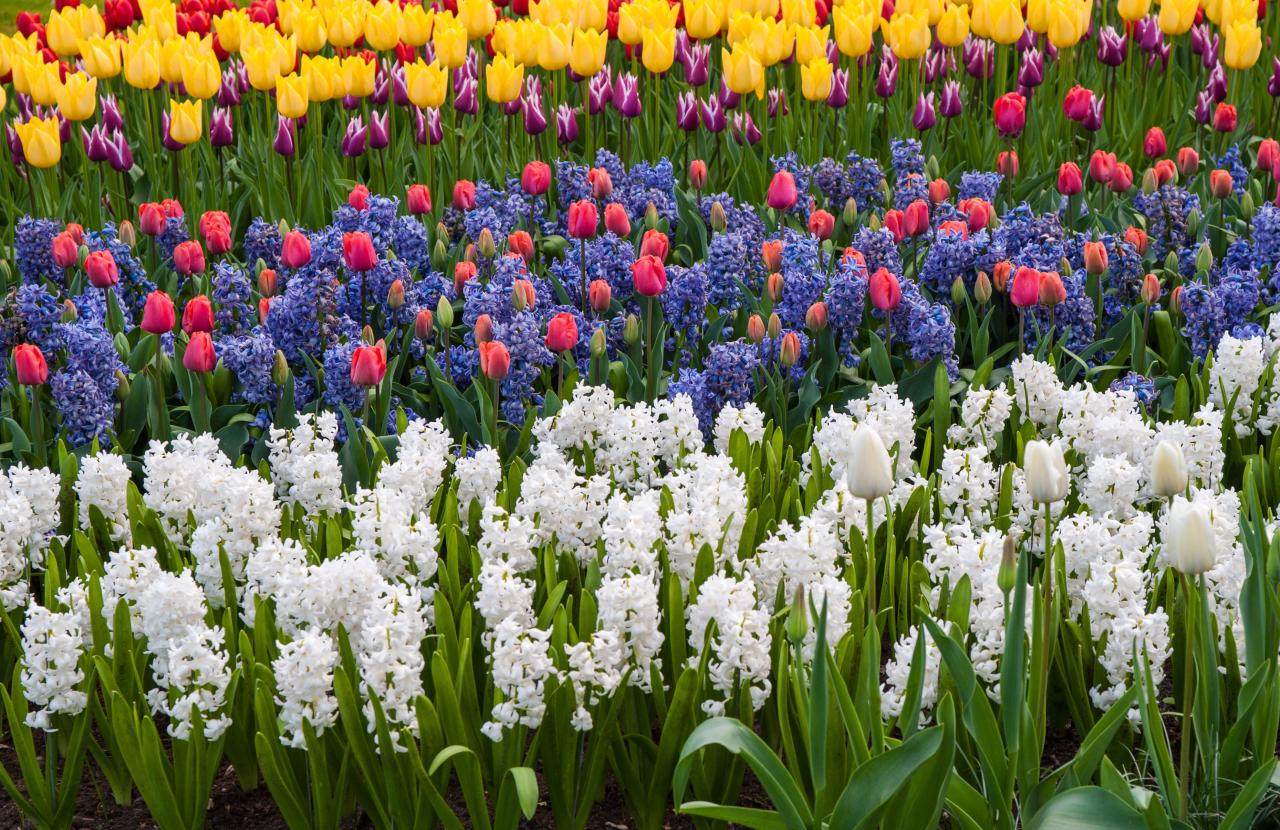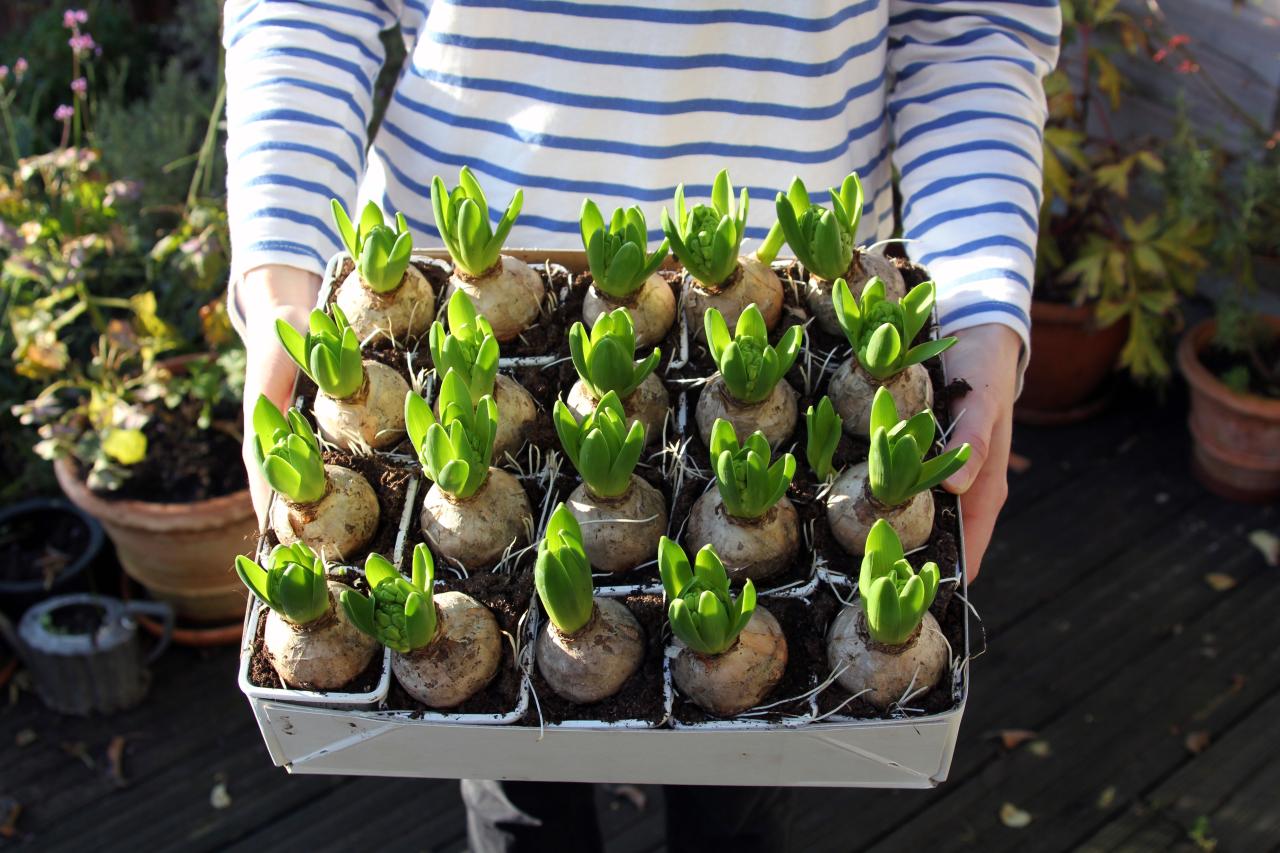How To Select The Best Spring Flowering Bulbs To Plant In Fall is a rewarding gardening endeavor that transforms your landscape with vibrant colors and delightful scents. From the delicate blooms of crocuses to the majestic tulips, selecting the right bulbs ensures a breathtaking display throughout the spring season.
This comprehensive guide delves into the art of choosing the perfect spring flowering bulbs, preparing your garden for planting, and nurturing them to reach their full potential.
Whether you’re a seasoned gardener or a novice, understanding the basics of bulb selection and planting is essential for a successful spring bloom. By considering factors like bloom time, height, color, and fragrance, you can create a harmonious and captivating garden that reflects your personal style.
This guide will provide you with the knowledge and practical tips to make informed decisions, resulting in a flourishing spring garden that will be the envy of your neighborhood.
Preparing for Planting

A well-prepared bed is essential for successful bulb planting. Healthy soil provides the ideal environment for bulbs to root, grow, and produce beautiful blooms.
Soil Preparation
Good drainage is crucial for bulb success. Bulbs are susceptible to rot if they sit in waterlogged soil. To improve drainage, consider amending heavy clay soil with compost or other organic matter. This will help loosen the soil, increase aeration, and enhance water retention.
Amending Soil
- Compost:Compost is a fantastic soil amendment. It improves soil structure, adds nutrients, and encourages beneficial microbial activity. Apply a generous layer of compost to the planting area, working it into the top 6-8 inches of soil.
- Other Organic Matter:Other beneficial soil amendments include peat moss, shredded bark, and leaf mold. These materials help improve soil drainage and aeration, promoting healthy root development.
Digging Planting Holes
The depth and spacing of planting holes are crucial for optimal bulb growth.
- Depth:General rule of thumb: plant bulbs twice as deep as their height. For example, a bulb that is 2 inches tall should be planted 4 inches deep. However, always refer to the specific planting instructions for each variety, as there may be variations.
- Spacing:Spacing between bulbs depends on the type and size of the bulb. Smaller bulbs, like crocuses and snowdrops, can be planted closer together, while larger bulbs, like tulips and daffodils, need more space. Refer to the planting instructions for recommended spacing.
Planting Your Bulbs

Planting spring-flowering bulbs in the fall ensures they have time to establish roots before the ground freezes. This gives them a head start for blooming in the spring. The process is relatively simple, but proper timing and technique are crucial for optimal results.
Optimal Planting Time
The ideal planting time for spring-flowering bulbs varies depending on your climate. It is generally recommended to plant bulbs six to eight weeks before the first frost. This allows the bulbs to develop roots before the ground freezes. Here’s a general guideline for planting times in different climate zones:
- Zone 3-5:Plant in September or early October.
- Zone 6-8:Plant in October or early November.
- Zone 9-11:Plant in November or December.
Step-by-Step Guide to Planting Spring-Flowering Bulbs
Planting bulbs is a straightforward process. Follow these steps for successful results:
- Choose a suitable location.Select a spot that receives at least six hours of sunlight per day. Ensure the soil is well-drained to prevent bulbs from rotting.
- Prepare the planting bed.Remove any weeds and loosen the soil to a depth of 12 inches. Incorporate compost or other organic matter to improve soil fertility and drainage.
Choosing the right spring-flowering bulbs for your garden is essential for a vibrant display of color come springtime. Factors like your climate, soil type, and desired bloom time all play a role in selection. Once you’ve chosen your bulbs, you’ll need to plant them in the fall for optimal growth and flowering.
For a comprehensive guide on the best practices for planting spring bulbs in the fall, check out this article: How To Plant Spring Bulbs In Fall For The Best Results. With proper planting, you can ensure your bulbs thrive and produce a breathtaking spectacle of blooms the following spring.
- Dig planting holes.The depth of the planting hole should be two to three times the height of the bulb. For example, a bulb that is 2 inches tall should be planted in a hole that is 4 to 6 inches deep.
- Place the bulbs in the holes.Position the bulbs with the pointed end facing upwards.
Space the bulbs according to the variety’s recommendations.
- Backfill the holes.Cover the bulbs with soil, gently firming it around the bulbs. Water thoroughly after planting.
- Label the bulbs.Use markers or labels to identify the type of bulb and the planting date. This will help you remember what you planted and when.
When selecting spring flowering bulbs to plant in fall, consider the size, shape, and color of the blooms to create a visually appealing garden. You can also create a garden that bursts with color by strategically planting bulbs that bloom at different times, How To Create A Colorful Spring Garden With Fall-Planted Bulbs , which can be achieved by researching the bloom times of different bulb varieties.
Choosing a variety of bulb types and colors will help ensure a vibrant and long-lasting display in your spring garden.
- Create a planting map.Draw a simple diagram of your planting bed, noting the location and type of each bulb. This will help you locate and care for your bulbs in the future.
Caring for Your Bulbs

After planting your spring-flowering bulbs, proper care is essential to ensure they thrive and produce beautiful blooms the following spring.
Here are some key steps to follow:
Watering
Consistent moisture is crucial for bulb development, especially during the initial establishment phase. Water deeply and thoroughly after planting to ensure the bulbs are well-hydrated. Watering should be infrequent but thorough, allowing the soil to dry slightly between waterings.
This encourages deep root growth and prevents root rot. Avoid overwatering, which can suffocate the bulbs.
Fertilizing, How To Select The Best Spring Flowering Bulbs To Plant In Fall
Bulbs benefit from a balanced fertilizer application in early spring, just as new growth emerges. Use a slow-release fertilizer formulated for bulbs or a general-purpose fertilizer with a lower nitrogen content. Avoid fertilizing too heavily, as excessive nitrogen can promote foliage growth at the expense of flower production.
Protecting Bulbs from Pests and Diseases
While most bulbs are relatively pest- and disease-resistant, they can still be susceptible to certain problems.
- Pests:Common bulb pests include voles, squirrels, and bulb flies. Voles and squirrels can damage bulbs by digging them up and eating them. Bulb flies lay their eggs in the soil, and the larvae feed on the bulbs. To prevent these pests, you can use protective netting, repellents, or traps.
- Diseases:Common bulb diseases include fungal diseases, such as gray mold and basal rot. These diseases can cause the bulbs to rot and die. To prevent these diseases, choose disease-free bulbs, plant them in well-drained soil, and avoid overwatering.
Providing Winter Protection
In colder climates, bulbs require winter protection to prevent them from freezing. A layer of mulch, such as straw, leaves, or wood chips, can help insulate the soil and protect the bulbs from harsh winter conditions. The mulch layer should be 4-6 inches deep and applied after the ground has frozen.
Wrap-Up
Planting spring flowering bulbs in fall is an investment in a vibrant and joyful spring. By following the steps Artikeld in this guide, you can create a garden that bursts with color and fragrance, offering a breathtaking spectacle throughout the season.
Remember to choose bulbs that complement your garden’s conditions and personal preferences, and enjoy the beauty they bring to your outdoor space. The anticipation of seeing your bulbs bloom each spring will add a touch of magic to your gardening journey.
Top FAQs: How To Select The Best Spring Flowering Bulbs To Plant In Fall
What are the best spring flowering bulbs for beginners?
Tulips, daffodils, and hyacinths are excellent choices for beginners due to their ease of planting and care. They offer a variety of colors and bloom times, making them suitable for most gardens.
How long do spring flowering bulbs last?
The lifespan of spring flowering bulbs varies depending on the variety and growing conditions. Generally, they can last for several years, with some varieties producing blooms for up to 10 years.
Can I plant spring flowering bulbs in pots?
Yes, you can plant spring flowering bulbs in pots. Choose pots that are large enough to accommodate the bulbs and provide adequate drainage.
When should I fertilize my spring flowering bulbs?
It’s best to fertilize spring flowering bulbs in early spring, just before they start to bloom. Use a balanced fertilizer specifically designed for bulbs.
